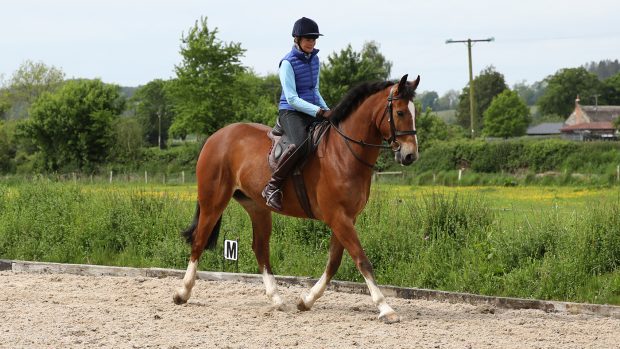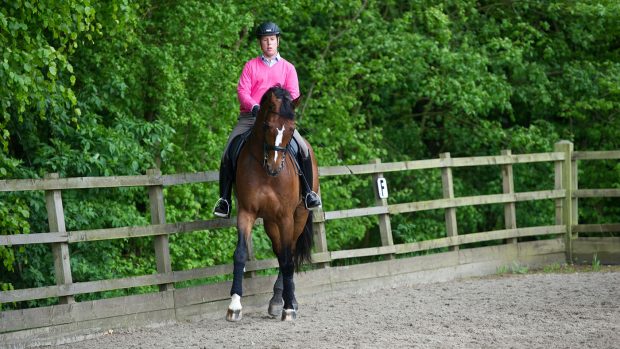Throughout the levels of dressage, riders are required to show four types of canter – working canter, medium canter, collected canter and extended canter. You might think that a medium canter simply means a faster canter, but this is not the case. Medium canter is a more energetic version of working canter that covers more ground because your horse’s stride and frame lengthens, but less so than with extended canter.
Medium canter first appears in British Dressage novice level dressage tests where you’re required to simply show a few strides. Clear transitions in and out of medium canter are not required until elementary, but you will get better marks if you can show them.
How to introduce medium canter
Before you can teach your horse medium canter, you need to ensure that you have an independent seat and be able to ride a good half-halt. Your horse also needs to accept an elastic rein contact and be able to engage his hindquarters. Before you start you want to make sure your horse is in front of your leg.
1. Ride down the long side in a working canter. As you approach the corner, ride a half-halt to transfer your horse’ weight back onto his hindquarters.
2. To create more engagement and keep your horse straight, ride him in a slight shoulder-fore position as you exit the corner from the short side.
3. On the long side, ease your hands forward fractionally while keeping your leg on. Avoid throwing your reins away because you’ll lose the connection. Your horse should stretch forward to seek the contact while lengthening his stride to cover more ground.
Gradually increase the number of medium canter strides over time and concentrate on maintaining balance and rhythm.
What the judge is looking for in the medium canter
The judge is looking for the following qualities:
- Good transitions into and out of the pace
- Consistent tempo and the rhythm
- Lengthened frame and stride
- Uphill balance
- Rider remains in balance without leaning backward
- The horse is supple and seeks an elastic contact without hollowing
- The horse remains straight and does not bring his hindquarters to the inside
How to improve medium canter
Louise Bell suggests training the medium canter on a circle as it helps to contain your horse and keep him round while you put the power in.
Begin by working on a spiral, riding a a 10-15m circle in working canter. As you spiral out and the circle gets larger, add more power from behind.
Then, while on a 20m circle, ride in a very slightly shoulder-fore position, keeping your horse straight so that his quarters don’t fall in or out. Be sure to ride inside leg to outside rein.
Once you can ride shoulder-fore on a circle, ride large around the arena – if your horse tries to take hold, put him back on a circle and regain control from your seat. Avoid pulling on the bit to bring your horse back as the canter has to go forward from the seat and come back from the seat.
When riding a test, Louise suggests using the corner before the medium canter to put your horse in a slight shoulder-fore position to engage the inside hind and keep the engine running. Then, when you’re on a straight line, you can release the power immediately for a transition right at the marker.
Louise also suggests to aim for a slight shoulder-fore feeling (but without the bend) when you’re in medium canter, ensuring there is enough power and engagement – this will help with straightness.
You might also like:

What is medium trot, and what are the benefits for your horse?

The scales of training explained for horse riders of all levels

What is extended walk, and how do you ride it for top marks?

Subscribe to Horse & Hound magazine today – and enjoy unlimited website access all year round
Horse & Hound magazine, out every Thursday, is packed with all the latest news and reports, as well as interviews, specials, nostalgia, vet and training advice. Find how you can enjoy the magazine delivered to your door every week, plus options to upgrade your subscription to access our online service that brings you breaking news and reports as well as other benefits.






